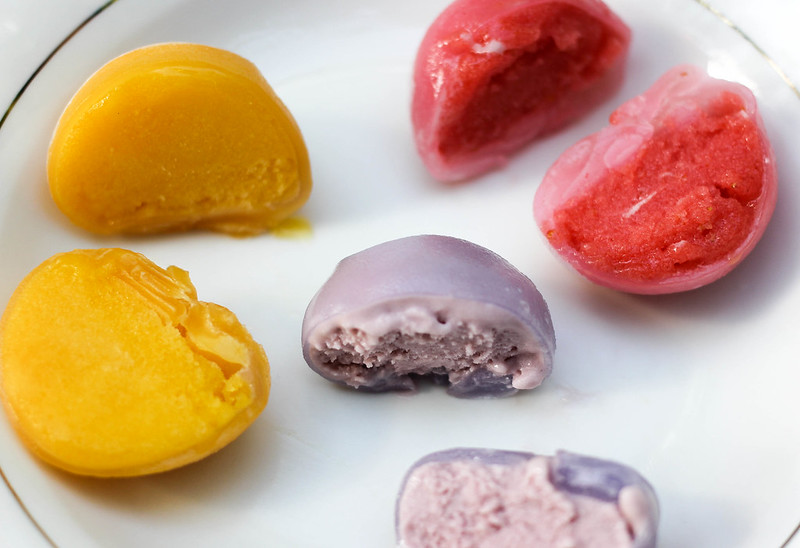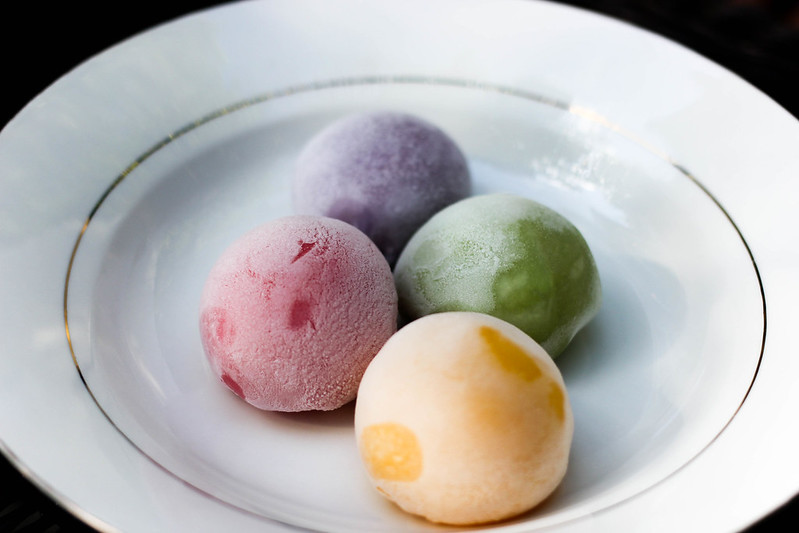So what is mochi? It’s a little ball of sticky goodness filled with everyone’s favorite frozen confection, and it pairs perfectly with a steaming bowl of ramen or a boatload of sushi.
Mochi ice cream consists of two parts: the chewy and thin outer layer (the mochi itself) and the ice cream (to state the obvious). Mochi is made from glutinous rice (as in glue-like and super sticky, not gluten-free) that has been pounded into its desired shape. We’ve seen it as a standard frozen yogurt topping, thanks to its semi-sweet taste and chewy consistency.
The mochi layer is then injected with ice cream, or flattened out and fit over a ball of ice cream, and dusted with cornstarch to prevent unwanted stickiness (to things like your fingers and your hair, but hey, we don’t judge). Flavors range from traditional favorites such as green tea, vanilla and red bean, to fruit-based options like mango and strawberry, and the slightly exotic: Kona coffee and plum wine, for example.
Mochi ice cream has been around since the Los Angeles-based Japanese confectionary shop Mikawaya introduced the treat into the American consumer market in the 1990s. Before mochi was injected with ice cream, traditional Japanese daifuku and manjū were filled with sweet red bean paste and different pieces of fruit. A personal favorite is daifuku filled with whole strawberries.
Fancy making your own mochi? Spoon can hook you up with the how-to right here. You can also check out a few of mochi ice cream’s cultural main course companions here and here.
And the final win? Only 100 calories each. No more endless scoops from the ice cream carton when you promised yourself to stop.




